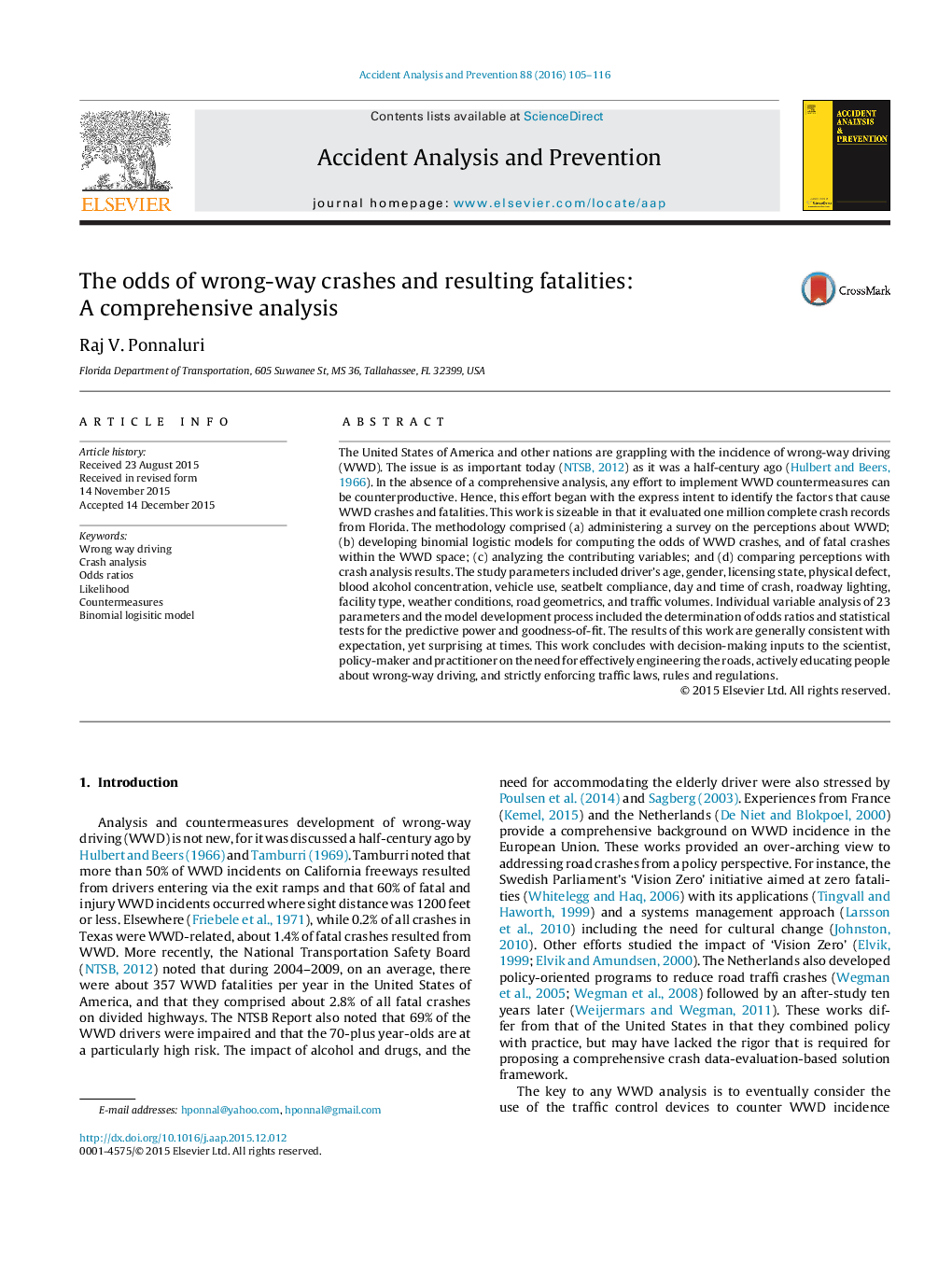| Article ID | Journal | Published Year | Pages | File Type |
|---|---|---|---|---|
| 6965367 | Accident Analysis & Prevention | 2016 | 12 Pages |
Abstract
The United States of America and other nations are grappling with the incidence of wrong-way driving (WWD). The issue is as important today (NTSB, 2012) as it was a half-century ago (Hulbert and Beers, 1966). In the absence of a comprehensive analysis, any effort to implement WWD countermeasures can be counterproductive. Hence, this effort began with the express intent to identify the factors that cause WWD crashes and fatalities. This work is sizeable in that it evaluated one million complete crash records from Florida. The methodology comprised (a) administering a survey on the perceptions about WWD; (b) developing binomial logistic models for computing the odds of WWD crashes, and of fatal crashes within the WWD space; (c) analyzing the contributing variables; and (d) comparing perceptions with crash analysis results. The study parameters included driver's age, gender, licensing state, physical defect, blood alcohol concentration, vehicle use, seatbelt compliance, day and time of crash, roadway lighting, facility type, weather conditions, road geometrics, and traffic volumes. Individual variable analysis of 23 parameters and the model development process included the determination of odds ratios and statistical tests for the predictive power and goodness-of-fit. The results of this work are generally consistent with expectation, yet surprising at times. This work concludes with decision-making inputs to the scientist, policy-maker and practitioner on the need for effectively engineering the roads, actively educating people about wrong-way driving, and strictly enforcing traffic laws, rules and regulations.
Related Topics
Physical Sciences and Engineering
Chemical Engineering
Chemical Health and Safety
Authors
Raj V. Ponnaluri,
